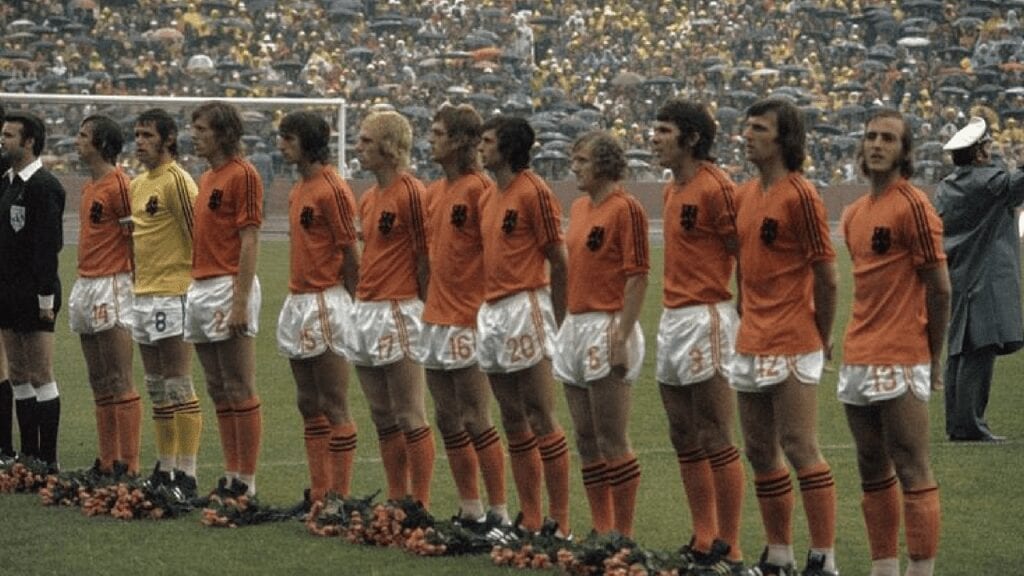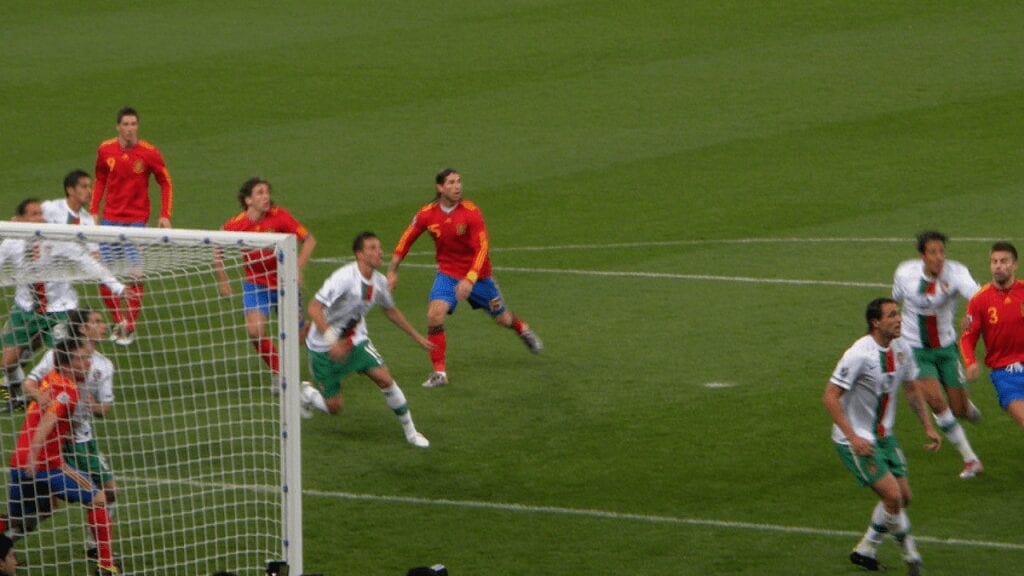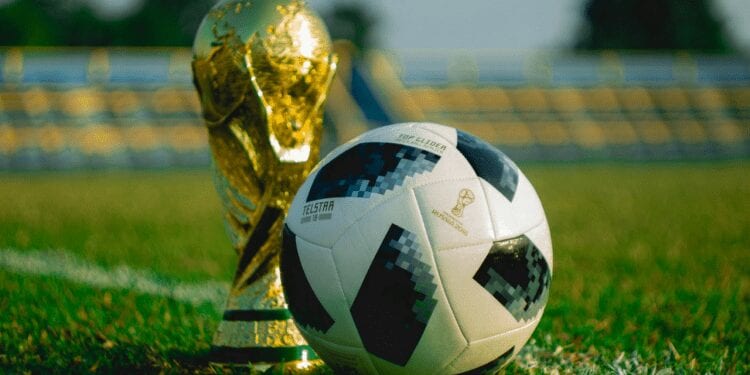The FIFA World Cup is nearly here. By now your Panini sticker albums should be complete and days off work confirmed. From June 14 until July 15 the eyes of the world will be on Russia, hosts of this year’s competition. The big games and World Cup rivalries are about to begin in earnest.
The biggest sporting event in the world, more than 1 billion tuned in for the last final in 2014. Current world champions Germany will defend their crown and be amongst the favorites. Brazil, France, and Spain have the best chance at victory. Very much the usual suspects.
Here in Panama great excitement is being felt. This young football nation has defied the odds and qualified for its first World Cup. A huge digital clock near Avenue Balboa is has been counting down the days since April.
When Spain and Portugal ended up in the same group it bought together two of the fiercest rivals in world football. In the spirit, here are some of the biggest world cup rivalries in international football and a little bit of the history behind them…
Mexico Vs. United States
These countries have a football rivalry dating back to 1934, the year of their first match in Rome. The second-ever World Cup was starting a few days later and qualification was the prize for the winners. The United States won 4–2 and went on to the World Cup where they lost 7–1 to eventual champions, Italy.
The United States did not record another victory against Mexico until over 40 years later.
Looking to find an advantage, the United States moved its home games to Columbus, Ohio. Previously even the games held in the States had drew mostly by Mexicans, but Columbus provided a genuine home-stadium feel. The increased home advantage meant results kept on improving. The colder temperatures took the Mexicans out of their comfort zone. It also suited the style of football favored by the United States, allowing them to press more effectively.
Finally, in Florida in 1980, the United States recorded a 2–1 win, which became a turning point for U.S. soccer. The rivalry kicked off in earnest at this point. Future matches became much closer affairs and the United States started to win most home games.
A win in Mexico continued to elude the United States, though. Mexico was a notoriously hostile place to visit. Teams had to contend with altitude, pollution, and some of the most partisan fans in the world. Coins, bottles, and batteries routinely rained down from the stands. In times past, effigies of U.S. players hanging by their necks intimidated visiting players.
In 1997, the United States got their first point on Mexican soil, a 0–0 in the qualifying group for the France ‘98 World Cup.
Brazil Vs. Argentina
The Superclásico started in 1914 and is perhaps the fiercest international rivalry in the sport. Unusually, this is a rivalry entirely based on football. There may be cultural differences, Argentinians tend to see themselves as European. The rest of South America tends to see them as arrogant. But at its heart, this rivalry is about the football supremacy and its place in each nations psyche.
Brazil and Argentina have always been two of the strongest teams in the world. Legendary names from Pelé and Garrincha through to Maradona and Messi have provided these games a magic not found in other matches.
The first two major games between these two nations 1937 and 1939 both ended in huge controversy. In 1937, the Brazilians left the pitch before the game finished, in protest at some questionable refereeing in favor of the home side. In 1939, the Argentina team left the field before the final whistle, again in protest at the referee. Since then, broken legs, fights on the pitch—and with police—and yet more refereeing controversy.
Perhaps the most bizarre incident occurred during the 1990 World Cup. Brazilian player Branco claimed he had been given a bottle of water laced with tranquillizers in what became known as the holy water scandal. Argentinian physios who were on the pitch treating the injured player, handing him a bottle to drink from. Within minutes he left the pitch, suffering from extreme dizziness. Maradona has since confirmed the water contained sedatives. Perhaps this is the most glamorous of all World Cup rivalries.

Germany Vs. Netherlands
The roots to this rivalry go back to WWII when Germany, under Nazi rule, occupied the Netherlands for five years, ruining much of the country.
An anti-German feeling became ingrained in the Dutch national psyche. This manifested itself in a desperation to beat Germany at football. When the two finally met in a competitive match it was the 1974 World Cup final.
The Dutch team, led by Johan Cruyff were huge favorites. They played a revolutionary, free-flowing style, endearing them to neutrals everywhere. The world had never seen anything like it, and approaching 40 years later theirs is the template used by Barcelona, Pep Guardiola, and others. Defeat was unthinkable.
Being football, the impossible happened, and Germany triumphed. “The Mother of all Defeats,” as it became known, was something akin to a national tragedy in the Netherlands.
After a period of national mourning, the need for a win against Germany became more desperate, the rivalry more bitter. With anti-German sentiment at an all-time high, the teams met in the semifinals of the 1988 European Championships.
The Dutch had another vintage team, one shaped by the 1974 defeat. They beat Germany, and went on to win the European Championships. A huge outpouring of emotion seemed to cleanse the country and the nationalistic feeling against Germany started to fade.
In 1990 a modern rivalry, based entirely on football started. During an ill-tempered World Cup match, Dutch player Frank Rijkaard spat at German Rudi Völler. As a result both players received red cards for fighting. This remains European football’s fiercest rivalry and one of the top World Cup rivalries.
Start Your New Life Today, Overseas
Honduras Vs. El Salvador
On this list we’ve seen how wars can stoke the fires of football rivalry and spill over onto the pitch. But, in 1969 a series of three World Cup qualifiers between these two teams provided the catalyst to a brutal war between the countries. The war, which became known as the “Soccer War” or the 100 Hour War, claimed the lives of around 6,000 people.
As backdrop to the game, increasing tensions between the two countries—trade, social reforms, and disputed borders—were causing agitation.
World Cup qualifying games became a way for newspapers to incite a nationalist feeling in both countries. After El Salvador lost the first game, a lady shot herself through the heart in despair. She received a televised funeral.
The return game, held in El Salvador, which replaced the Honduras flag with a tattered cloth for the national anthems. Honduras fans were terrorized and the national team were more concerned with escaping alive than playing football. Perhaps luckily, El Salvador won the game, meaning a decider. For security it was played in neutral Mexico City.
Before the match started, the two countries had ended diplomatic relations and soon after the war started. El Salvador invaded leading to over 100,000 refugees. It took a further 11 years for the signing of a peace treaty. These days relations are more cordial, but for people of a certain age this remains the biggest match for both teams.
England Vs. Scotland
The oldest international match in the world, the first game between these two sides, dates back to 1872 in Glasgow. The rivalry between the two countries goes back centuries and has its roots in the many wars they fought.
The game was played annually from 1872 until 1989, apart from the breaks owing to WWI and WWII. In 1967, just one year after England won the World Cup, Scotland beat England at Wembley Stadium. The Scots quickly proclaimed themselves the unofficial title of Best Team in the World.
Unfortunately, Scottish football has declined at a greater pace than English football. Today the rivalry is not what it once was. Fans of both countries will be hoping that in future this can again become one of the important World Cup rivalries.
Most Scottish people now make do with supporting “whoever is playing against England” at major tournaments. This is usually a rewarding experience! English fans have seen the rivalry with Argentina and Germany take on more significance, which has been less rewarding.
Japan Vs. South Korea
Probably the most politically charged rivalry of them all… Korea was under Japanese colonial rule from 1910 until the Japanese were defeated at the end of WWII. Conditions could often be brutal for the Koreans who were vanquished by Imperial Japan only to find their country divided in two as the United States and Soviets could not agree on a suitable government for the country.
Both sets of fans behave antagonistically, with the Japanese often sporting the imperialistic flag. The Koreans retaliated by waving banners reading anti-Japanese sentiments.
On the pitch, South Korea had the edge until recently, but a new generation of skillful Japanese players has tipped the scales back into Japan’s favor. Both teams are now regulars at World Cup finals. It will be interesting to see if either can navigate tricky groups and make it to the knock-out stages. As a result this is one of the World Cup rivalries that usually takes place in the qualifying stages.
Croatia Vs. Serbia
From 1918 to 1991 both countries formed Yugoslavia. In 1991 the Croatian War of Independence was started and in 1995 Croatia was formed.
The football rivalries between these countries has its roots in domestic club football.
In the late 80s and early 90s, Red Star Belgrade and Dinamo Zagreb were two of the best teams in Europe. During a game between these teams in May 1990, a riot broke out that many believe marked the beginning of the war.
Zvonimir Boban, who went on to play for AC Milan, karate-kicked a policeman who had attacked a Zagreb supporter. He became the defining image of Croatian resistance.
Croatia and Serbia remain fierce rivals, and while violence hasn’t been a part of recent games, this is not a good match to visit the stadium for.
When they are not competing at football, both countries are considered to be safe places to visit. Croatia in particular has become one of Europe’s leading tourist destinations in recent years.

Spain Vs. Portugal
Also known as the Iberian War, this is one of the oldest football rivalries in the world. Starting in 1921 Spain has had the advantage for most of the rivalry. Hostilities between the two countries date back centuries, to 1581 when Philip II of Spain became ruler of Portugal.
Since then Spain and Portugal have usually been on different sides whenever there has been a war in the area. They have also had a number of conflicts in South America where both countries had territories.
Spain has had the upper hand recently, beating Portugal on the way to winning the World Cup in 2010 and the European Championships in 2012.
They are in the same group for this year’s World Cup final. As two of the pre-tournament favorites, expect this to be one of the games of the World Cup.
Iran Vs. Saudi Arabia
These two countries have had a long history as the main powers in West Asia and there is little love lost between them. This is a rivalry based on a racial divide, with Iran being majority Sunni Muslims and Saudi Arabia being Shia.
Gamesmanship has long been a part of this match-up. The Iranian football team endured detention at an airport in Saudi Arabia for eight hours. More recently, Saudi Arabia refused to play in Iran saying it was “too dangerous” and insisting the game must move to a safer venue elsewhere. However, every other country had played games in Iran without any trouble.
Over the years, the two teams stayed evenly matched and played some amazing games. More recently, Saudi Arabia has had the edge in head-to-head competitions although Iran is generally seen as the stronger team at the moment.
Italy Vs. France
Two of the world’s most successful teams, Italy and France share five World Cups between them. As a result this is one of the great World Cup rivalries.
Despite, or perhaps because of, a similar culture of excellent food, wine, and fashion, the two nations have always been rivals.
This game, known as the Derby d’Europa, dates back to 1910. The rivalry has seen a number of truly historic games.
In the 2006 World Cup, the two sides met in the final. The score tied at 1–1, the match heading towards penalties, when French talisman Zinedine Zidane head-butted Marco Materazzi, getting sent off in his last-ever game. Italy won the match on penalties, with David Trezeguet missing a crucial shot.
Six years earlier, in the final of the European Championships, Trezeguet had scored the winning goal against the Italians. Unquestionably a dramatic game, Italy had led for 90 minutes before France equalized, taking it to extra time. Italy did not qualify for the 2018 World Cup in Russia, missing out for the first time in 60 years, and France, for one, will not be too disappointed that they’re not there.
Oliver Lovett










